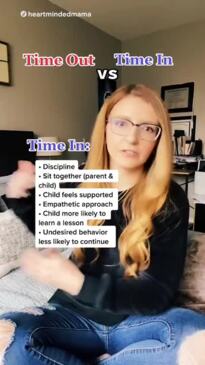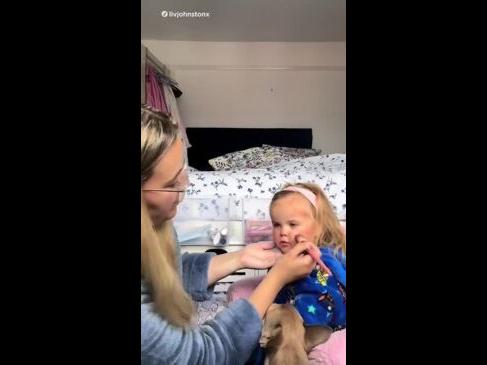The unusual method millennial parents are using instead of 'time-out'
But does this gentle parenting alternative actually work?

Parenting
Don't miss out on the headlines from Parenting. Followed categories will be added to My News.
Being sent to your room for naughty behaviour is a disciplinary technique that likely goes back centuries.
While many of us had to endure the naughty step, naughty corner, or traditional 'time out' in our bedrooms to stew over our misdemeanors, millennial parents have a new gentle parenting technique and it’s not a ‘time out’ but a ‘time in’.
Alissa known as Heartminded Mama on TikTok, is a divorced mum and teacher who shares her understanding of the two opposing methods for discipling kids.
“Let's talk about the difference between a time out and a time in,” the gentle parenting advocate begins in her clip.
Want to join the family? Sign up to our Kidspot newsletter for more stories like this.

RELATED: Pregnant woman outraged by ‘ruthless’ parking ticket
"I believe in discipline, not punishment"
“A time out is more of a punishment approach and as you guys know, I believe in discipline, not punishment.
“[Time out] it's punishment, it's isolating to the child. They are told to go sit by themselves and think about what they did. They don't learn anything, they feel very alone and the behaviour is more likely to continue.
Alissa then describes the benefits instead of using a time in approach.
“A time in is when you take a break out with the child, you are together sitting next to each other or you're nearby however close they want you to be and you're talking it through with them.
“ You're letting them know that you're there for them. You're talking about the issue at hand: ‘Why did you do that? How can we make a better choice next time? What was the rule? How can I support you in following that rule next time?’”
Introducing our new podcast: Mum Club! Listen and subscribe wherever you get your podcasts so you never miss an episode.
RELATED: Maggie Dent shares a teacher’s emotional plea to parents
"It's an empathic approach"
She explains that by being there in the moment with them you are able to help them learn from their mistakes while feeling supported.
“It's an empathetic approach. It's discipline, you're taking a break, but they're also learning from it and you're assisting them in that and so the behaviour is less likely to occur again.”
Comments from her followers were mostly enthusiastic about this gentle approach to discipline: “Love this! I need to try it.” And: “I heard kids who get time out are less likely to come to their grown ups later in life when they have big issues.”
One user was not sure.
“There’s value in both. But consistently using ‘time in’ gives the child your attention which is what they were aiming for to begin with.”
Others had questions about how it might work with multiple kids or where a caregiver is busy - perhaps in a daycare setting and so might not have the capacity to make the time.
RELATED: Shocking sight as kids are walked ‘like dogs’ by daycare
"Get comfortable in your new calming space"
For parents keen to try the ‘time in’ technique, Nicole Day, a neurodivergent mum of two offers some tips.
“You must first create a calm down space in your home to use consistently,” she shares from her Raising an Extraordinary Personwebsite.
“Then, you and your child should say goodbye to time-outs and spend time getting comfortable in your new calming space, using a positive approach to familiarise them with it."
RELATED: Child’s repulsive attack on plane passengers behind her
Come up with your 'time-in' plan
Nicole concludes with some great advice about coming up with a 'time-in' plan so you child knows what to expect.
“You can either create a time-in plan with your child or on your own, depending on your child’s age and abilities.
“However, if you make it on your own, make sure you go over the plan with your child first. They need to know what to expect.”
More Coverage
Originally published as The unusual method millennial parents are using instead of 'time-out'




